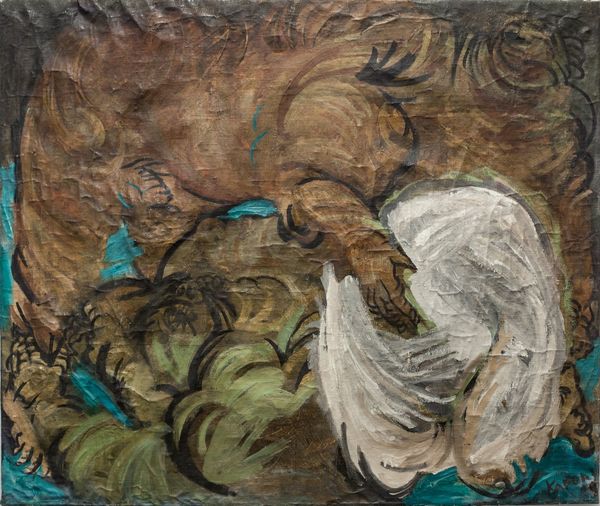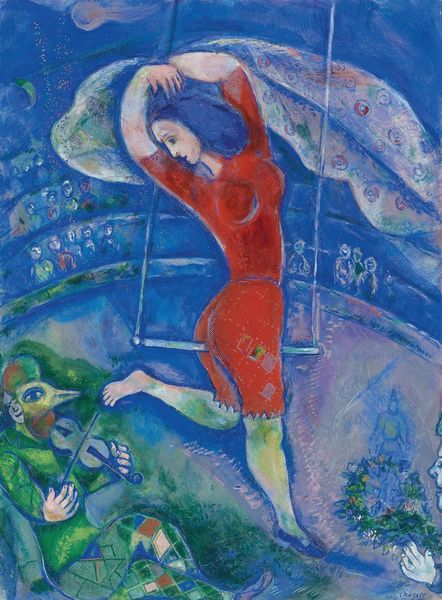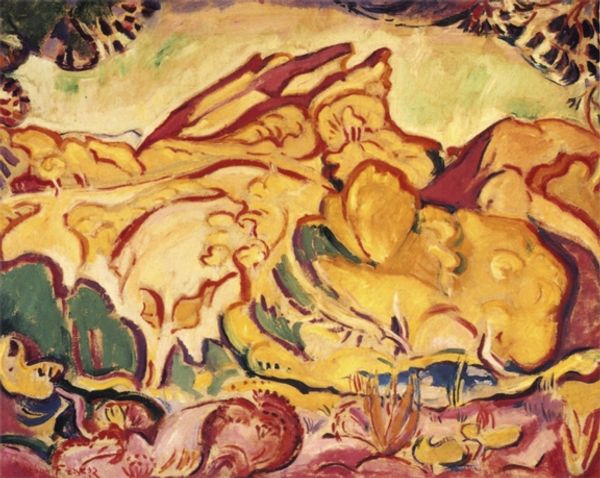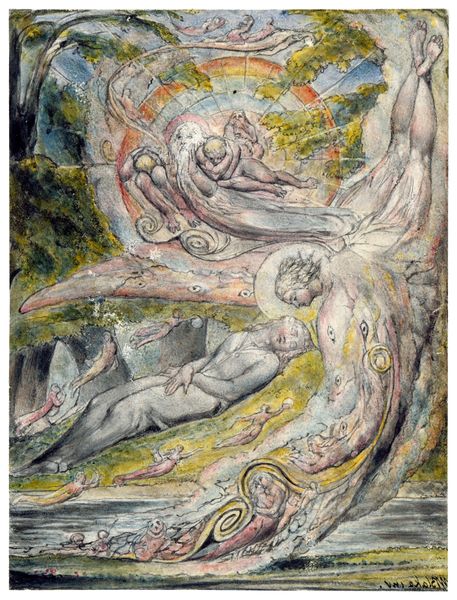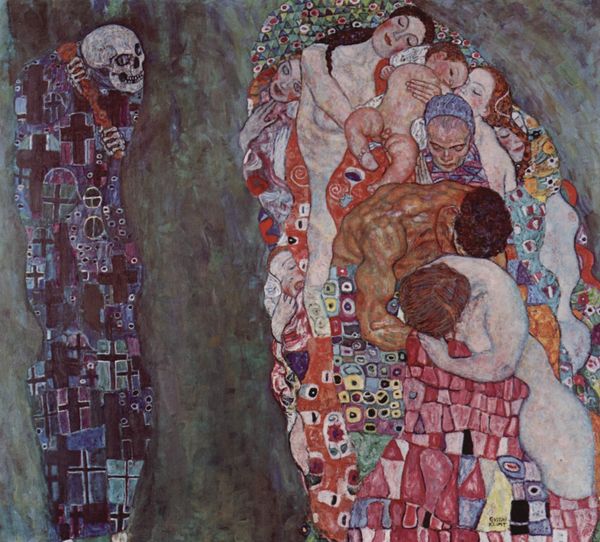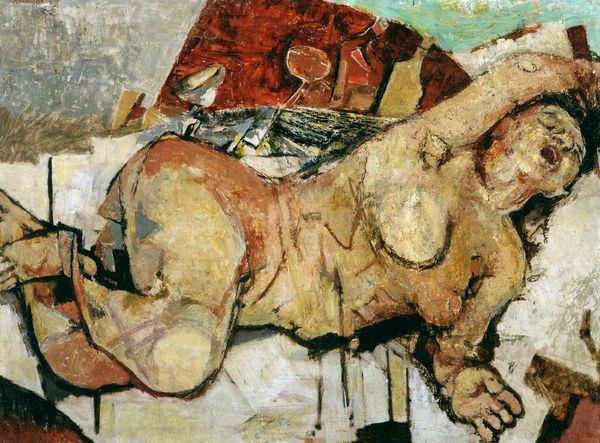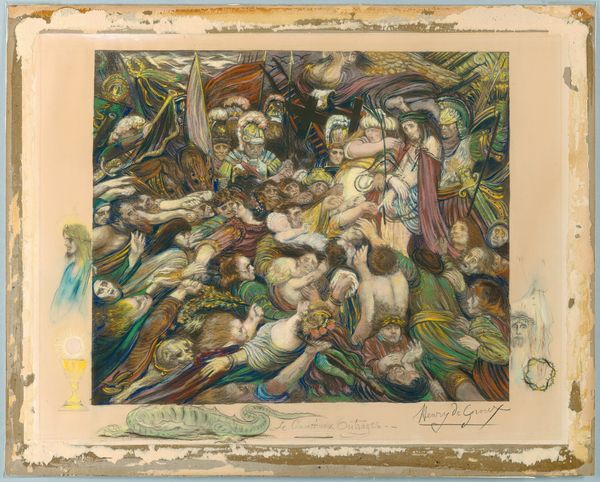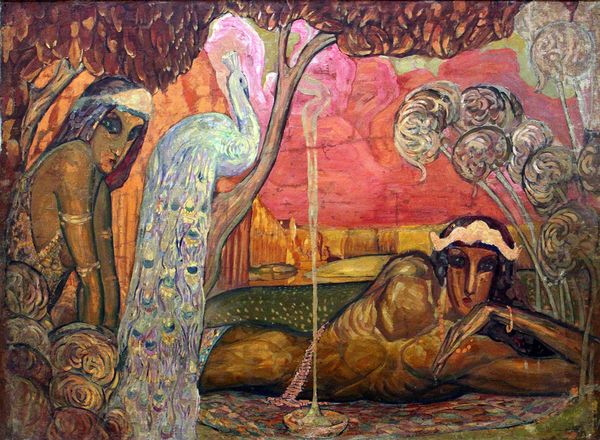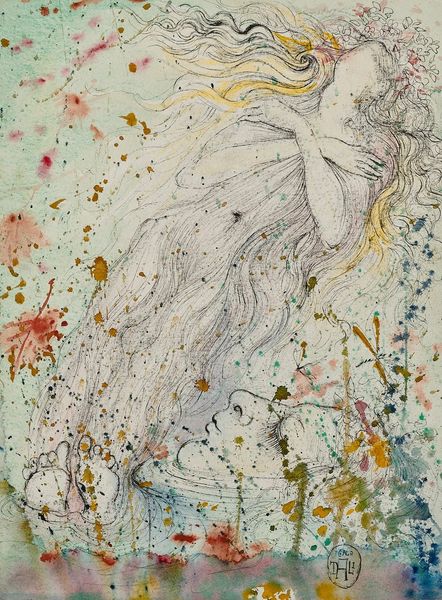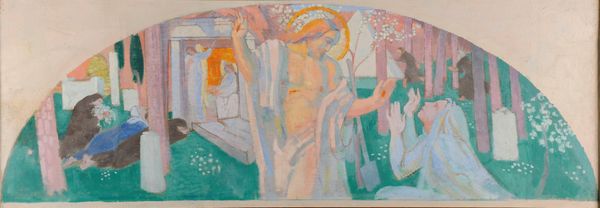
Copyright: Public Domain: Artvee
Egon Schiele’s painting, *Death and Girl*, confronts us with an intimate, unsettling embrace, rendered with oil on canvas. The composition is dominated by a brown cloaked figure, presumably ‘death’, enveloping a younger woman in a patterned red dress. See how Schiele uses stark, angular lines and a muted palette to convey a sense of unease? The figures intertwine, their bodies contorted, challenging traditional notions of beauty and harmony. The rough texture of the paint adds to the raw, visceral quality of the work. The figures are set against an ambiguous background that destabilizes any sense of place, and draws attention to the figures’ internal states rather than the external world. Schiele, influenced by expressionism, delves into the subconscious, exploring themes of mortality and sexuality. The semiotic weight of the embrace, the brown cloaked figure and the stark colour pallete destabilizes established social norms of the period. The very structure of the painting—its lines, forms, and colours—functions as a powerful expression of existential anxiety, reflecting the cultural and philosophical currents of early 20th century Europe. Schiele’s *Death and Girl* remains a potent symbol, urging viewers to confront uncomfortable truths about life, death, and desire.
Comments
No comments
Be the first to comment and join the conversation on the ultimate creative platform.
